I know there have been several questions about using the Fast Fourier Transform (FFT) method in python, but unfortunately none of them could help me with my problem:
I want to use python to calculate the Fast Fourier Transform of a given two dimensional signal f, i.e. f(x,y). Pythons documentation helps a lot, solving a few issues, which the FFT brings with it, but i still end up with a slightly shifted frequency compared to the frequency i expect it to show. Here is my python code:
from scipy.fftpack import fft, fftfreq, fftshift
import matplotlib.pyplot as plt
import numpy as np
import math
fq = 3.0 # frequency of signal to be sampled
N = 100.0 # Number of sample points within interval, on which signal is considered
x = np.linspace(0, 2.0 * np.pi, N) # creating equally spaced vector from 0 to 2pi, with spacing 2pi/N
y = x
xx, yy = np.meshgrid(x, y) # create 2D meshgrid
fnc = np.sin(2 * np.pi * fq * xx) # create a signal, which is simply a sine function with frequency fq = 3.0, modulating the x(!) direction
ft = np.fft.fft2(fnc) # calculating the fft coefficients
dx = x[1] - x[0] # spacing in x (and also y) direction (real space)
sampleFrequency = 2.0 * np.pi / dx
nyquisitFrequency = sampleFrequency / 2.0
freq_x = np.fft.fftfreq(ft.shape[0], d = dx) # return the DFT sample frequencies
freq_y = np.fft.fftfreq(ft.shape[1], d = dx)
freq_x = np.fft.fftshift(freq_x) # order sample frequencies, such that 0-th frequency is at center of spectrum
freq_y = np.fft.fftshift(freq_y)
half = len(ft) / 2 + 1 # calculate half of spectrum length, in order to only show positive frequencies
plt.imshow(
2 * abs(ft[:half,:half]) / half,
aspect = 'auto',
extent = (0, freq_x.max(), 0, freq_y.max()),
origin = 'lower',
interpolation = 'nearest',
)
plt.grid()
plt.colorbar()
plt.show()
And what i get out of this when running it, is:

Now you see that the frequency in x direction is not exactly at fq = 3, but slightly shifted to the left. Why is this?
I would assume that is has to do with the fact, that FFT is an algorithm using symmetry arguments and
half = len(ft) / 2 + 1
is used to show the frequencies at the proper place. But I don't quite understand what the exact problem is and how to fix it.
Edit: I have also tried using a higher sampling frequency (N = 10000.0), which did not solve the issue, but instead shifted the frequency slightly too far to the right. So i am pretty sure that the problem is not the sampling frequency.
Note: I'm aware of the fact, that the leakage effect leads to unphysical amplitudes here, but in this post I am primarily interested in the correct frequencies.
